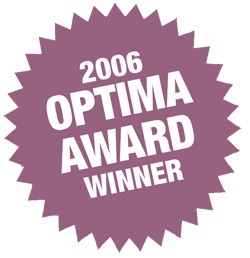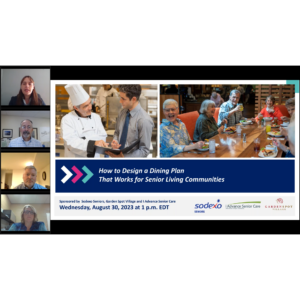Creating “Choice” Environments
| Creating ‘Choice’ Environments by the staff of Lancaster Health Group, Chicago, Illinois |
 One of the most difficult decisions family members must make is deciding that their mother or father needs more assistance than they can provide. The overwhelming guilt of placing a loved one outside the home can often create turmoil and chaos among the family members themselves. The perceived reputation of the healthcare industry, let alone the nursing home industry, is unsettling to families, but the overall institutional atmosphere leads the way to further dissatisfaction and apprehension. One of the most difficult decisions family members must make is deciding that their mother or father needs more assistance than they can provide. The overwhelming guilt of placing a loved one outside the home can often create turmoil and chaos among the family members themselves. The perceived reputation of the healthcare industry, let alone the nursing home industry, is unsettling to families, but the overall institutional atmosphere leads the way to further dissatisfaction and apprehension.At Chicago-based Lancaster Health Group, which operates seven nursing home facilities, we started the C.H.O.I.C.E. program (Choosing How Our Individualized Care Evolves) in January 2003 to allay these concerns. Families (typically baby boomers) were generally unhappy about placing their loved ones in nursing homes. The biggest problem we saw had to do with life and the perceived quality of life in a nursing home setting. It is very apparent that when a resident adjusts well to a new environment, the family becomes happier and fewer problems or issues are encountered. We wanted to create an environment that made that adjustment quicker. We wanted our homes to be a pleasant surprise for the resident and an enjoyable place for the family to visit. Planning for C.H.O.I.C.E. After spending two days in Missouri, we believed we had a starting point from which we could develop a new and different program based on increasing the quality of life in a nursing home. On the way back, we brainstormed about what we wanted to do and in what order. Our goal was to create an environment where we would be proud to have our own parents reside. Putting ourselves in our parents’ place, we started with the things most important to us. All agreed that fine dining was going to be the first project tackled. Dining Services Before our steam tables arrived, we created a questionnaire to find out what the residents wanted; e.g., what time they wanted to get up in the morning, what day and time they wanted their bath, and whether they wanted a bath or shower. Once data were compiled, we knew we had to provide more time for dining. A two-hour window would be needed for dining since everyone got up at different times and more people wanted to eat in the main dining room. The first steam table arrived in May 2003, and all our facilities had initiated their fine-dining programs by July. We also began using china plates, glasses, and cloth napkins. The cloth napkins were used as clothing protectors so we could eliminate the word “bib” from our vocabulary. The residents gave a unanimous “thumbs-up,” and by October we were seeing that food was a large part of the residents’ quality of life. By then:
Dementia/Alzheimer’s Care Enhancing Activities Our in-house activities were upgraded to include more educational programs such as documentary films, horticulture classes, and learning about the facility pets. Bathing the dog, taking the dog for grooming, and feeding the ducks, for example, have become part of the activities program. The administration at one home gave staff a list of all the former occupations of its residents to recommend tasks that might help the residents feel useful. A former beautician took a corner of the beauty shop to do nails two days a week, and a former security guard was in charge of checking to make sure all the doors were locked at night. Some residents fold laundry, place the silverware in our cloth napkins, help with parties, take other residents to the dining room, and answer the phone for the receptionist when she takes her break. The residents provide extra hands during busy times, and they feel valued and have a sense of purpose. To make it easier for residents to communicate with families, many of our facilities are now providing cell phones to alert residents. All our homes now have computers, and residents are learning how to e-mail grandchildren and use the Internet. |
Dolton HealthCare Safet Keljalic, Administrator Carolyn Catlett, Director of Nursing Elm Brook HealthCare Fairmont Care Centre Norridge HealthCare Lake Shore HealthCare Oak Brook HealthCare Wauconda HealthCare Lancaster Health Group |
| Creating Homelike Environments One of the greatest things that has come out of the C.H.O.I.C.E. program is that everyone is thinking about ways to make the residents happier. One home converted one of the large tub rooms into a spa with scented candles, fluffy colored towels, and dim lighting. It began to offer bubble baths, and residents who usually took showers now requested these. As a matter of fact, the percentage of residents who preferred baths grew from 3% to 18%. All the other homes followed suit. One facility bought foot spas and began giving pedicures, which also caught on generally. More than 60% of our resident rooms have now been remodeled to offer nicer furniture, resulting in more personalized space and more secluded sleeping areas. We also created “town squares” in our common areas that are inviting to all residents and increase resident involvement significantly. Once we knocked down walls and created large flowing spaces, the “room” belonged to no one person but to everyone. These spaces include a jukebox with ’40s and ’50s music, ice cream fountain, magazine area, gift shop, bistro, and movie theater. There are game tables, cooking areas, and barbecue grills on the patios for families to use. Washers and dryers are available for residents who want to do their own laundry. No longer do friends and family sit in a resident room to visit; instead they actively enjoy the surroundings, activities, food, and pets. One aspect of creating a homelike environment was looking at how many times during the night residents were awakened for medications. None of us sets an alarm clock to take medications, and we wanted to give the same respect and consideration to our residents. After addressing this issue with physicians, we were able to decrease the percentage of medications given between the hours of 10 p.m. and 7 a.m., from 75% down to 15%, and on occasion, down to 0%! The better a person sleeps, the better he or she feels and behaves, as we discovered with dementia/Alzheimer’s residents. Expanding and Improving Hospice The entire experience has been overwhelmingly successful. Families are able to grieve in private, and the other residents in the home feel respected at the most private and vulnerable time of their life. Since few residents are able to attend funerals, they are now able to go to this room and pay their respects as a part of their community. One family member was so impressed that she wrote an article about her dying mother for a magazine and mentioned how positive her experience had been with our organization. Measuring Success This is not a program that can be implemented without cost, but it is a program that does not have to cost as much as we spent. The cost, $15.00/per day/per resident, relates to operating cost per day and does not include any capital expenditures. While the cost per day of operating the program is significant, the increase in our Medicare census has made this program cost-effective; we have experienced a significant increase in our Medicare census since starting the C.H.O.I.C.E. program. Although we have enjoyed this significant increase, we have set our sights to achieve a much higher reimbursement rate through a better payer mix. This truly has been our vision: to be the facility of choice in every community we serve-and to do so in a cost-effective manner. Conclusion For more information, contact Cheryl Morris, Vice-President of Operations, Lancaster Health Group, at (773) 509-1400. To send your comments to the editors, contact us. |
I Advance Senior Care is the industry-leading source for practical, in-depth, business-building, and resident care information for owners, executives, administrators, and directors of nursing at assisted living communities, skilled nursing facilities, post-acute facilities, and continuing care retirement communities. The I Advance Senior Care editorial team and industry experts provide market analysis, strategic direction, policy commentary, clinical best-practices, business management, and technology breakthroughs.
I Advance Senior Care is part of the Institute for the Advancement of Senior Care and published by Plain-English Health Care.
Related Articles
Topics: Finance , Housing , Staffing











